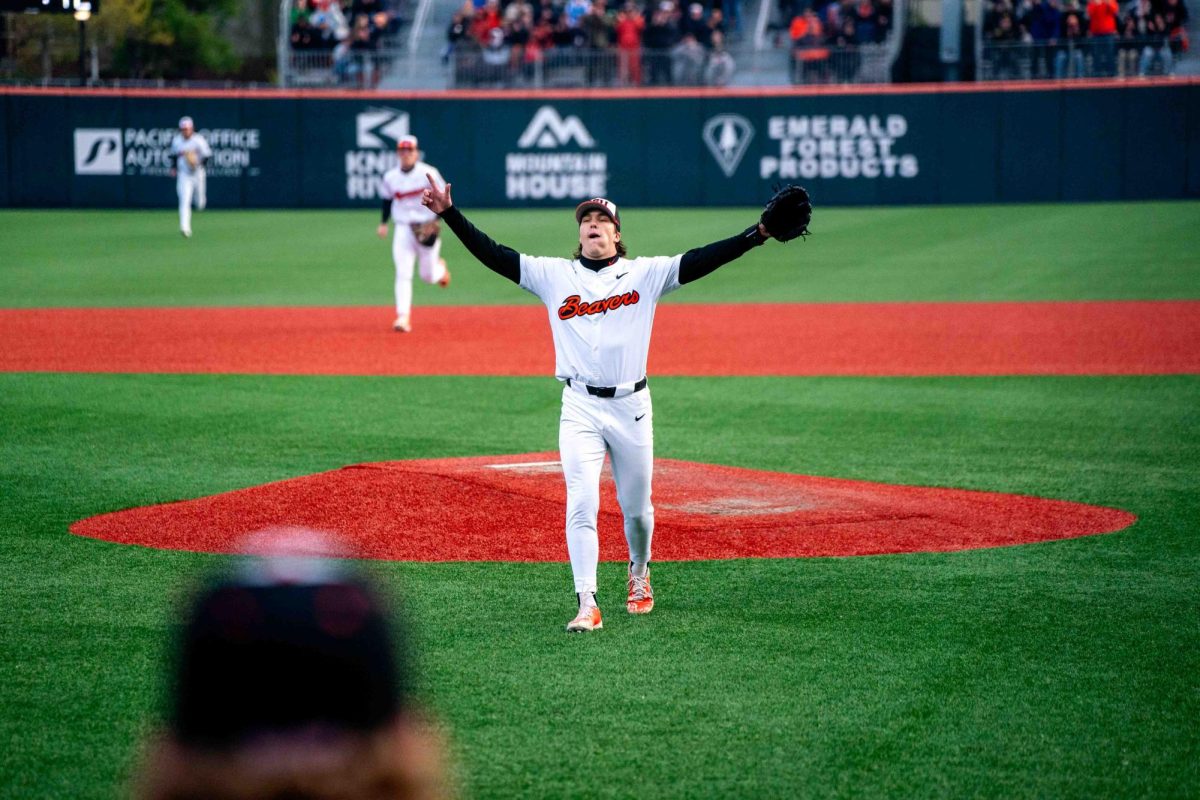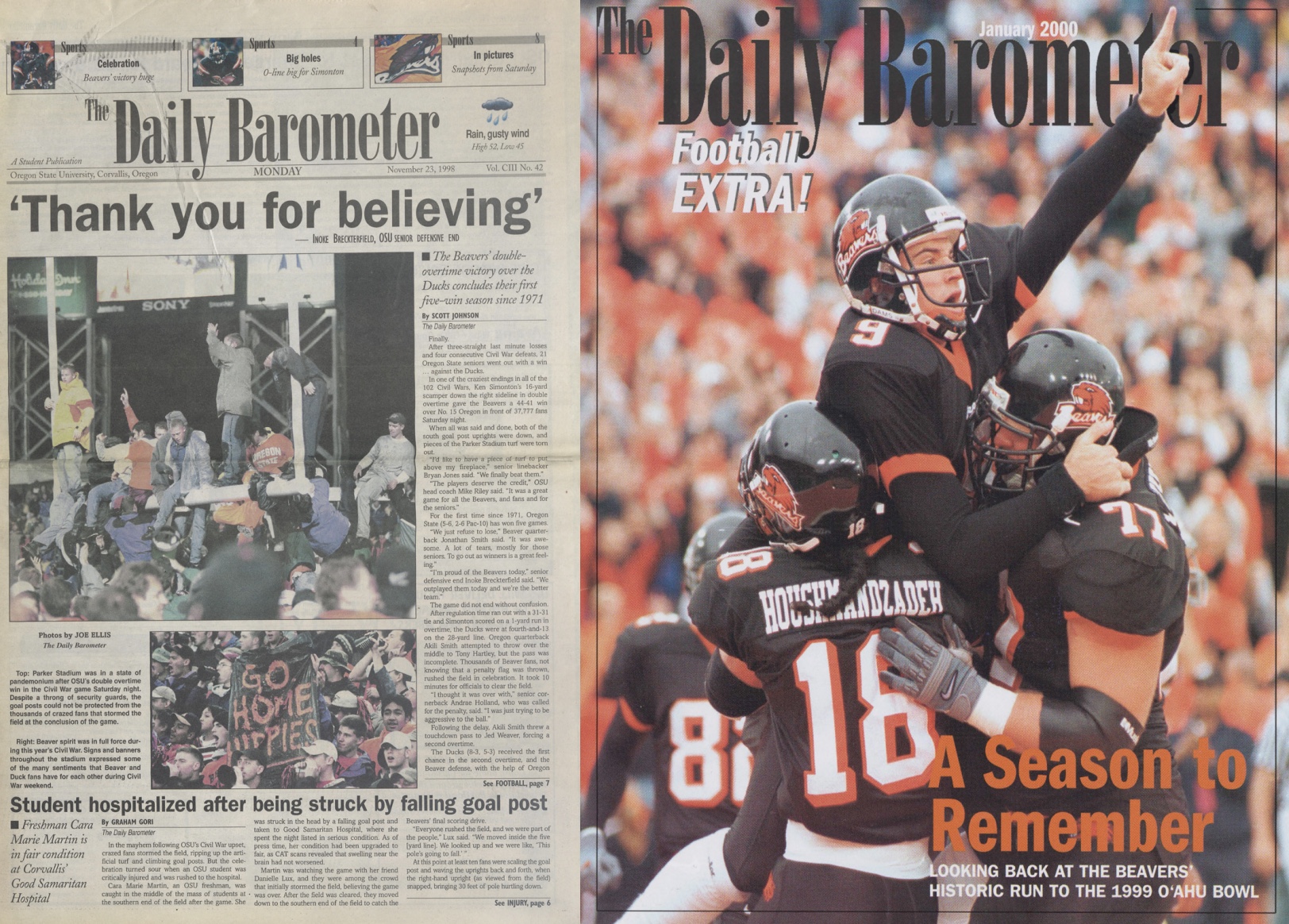The Daily Barometer has been following Oregon State University and the University of Oregon’s rivalry for over a century, charting stories of elated victory and tragic loss.
The Rivalry Game, previously referred to as the Civil War game, is an over 100-year-long tradition. At the end of every season, Oregon State and the University of Oregon meet to face off against one another.
The Rivalry Game began in 1894, with The Barometer first opening in 1896. The two share a common legacy, and while it is impossible to ask the first writers what they thought of the tradition, it is possible to take a look at its modern history.
“It’s one of the longest-standing games in college football,” said Brian Rathbone, who is now a sports reporter for the Bend Bulletin. “Everyone has some skin in the game, a little investment.”
The Barometer interviewed several legacy sportswriters, from as recent as 2019, all the way back to 1998.
One common trend was clear; even when OSU was on a losing streak, the Rivalry Game was a major event. It’s a time to throw out that season’s records, where a win against the Ducks could turn the entire thing on its head.
“The Civil War (game) feels like a culmination,” Alex Luther, who worked with Orange Media Network during the 2019 and 2020 seasons said. “Not just because it’s the last game on our football schedule, but because it’s a long-standing rivalry.”
Many remarked that the attitude around the rivalry could get particularly intense. While it never devolved into pure anger, trash talk was thrown in the name of sports.
“The competitive nature of the game gets even stronger, especially when you’re in a college atmosphere,” said Raju Woodward, who has covered the game both for The Barometer as well as independent publication Beaver Blitz. “It almost felt like that week was a holiday week because everyone was so fired up for the game.”
The drama was shown on the field as well. Writers recalled the years when OSU deterred from losing streaks, as well as colossal losses.
“That whole year, there was this feeling that Oregon State had finally turned the corner,” Andrew Hinkelman said, recalling his experience with the 1998 game. “Then to beat the Ducks, a double overtime winner. I was part of the crowd that stormed the field, tore down the goal post and ripped up the turf … Just that euphoria that went with that victory.”
The legacy of the Rivalry Game is geographically dictated. Within college football on the West Coast, the rivalry between Oregon’s two biggest schools is the only rivalry within the same state bounds.
It’s impossible to truly understand the legacy of the Rivalry Game, however, without coming to terms with how the University of Oregon viewed the game itself.
“Rivalries ebb and flow, based on stakes and whatnot,” said Rathbone. “One of the things I think is that Oregon views Washington more as its rival … In a way that dampens the Civil War a little bit.”
To some, the Rivalry Game was a time of community building, a linchpin of Corvallis’ economy, or a symbol of the power of sports. However, to everyone who ever covered the game, the Rivalry Game was a moment to remember.
“There’s a lot of pride and a lot of tradition in it,” said Josh Worden, who covered the game from 2013 through 2016. “For Oregon to be a state without a huge population, without many very big metropolitan areas, to have a pair of Power Five programs who have both been very successful in the national scene and various sports, that game between the two has such big upheaval.”

















































































































